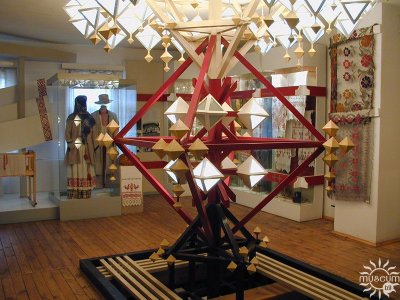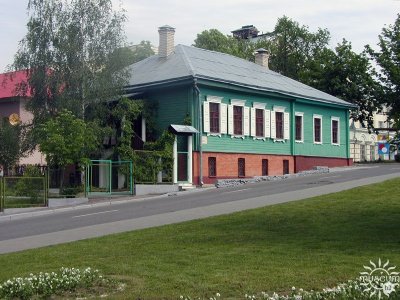In Belarus weaving has been known from ancient times, which is proved by archeological finds (spindle-stones, prints of fabric on pottery, ancient tools). This is the most widespread and ancient kind of national arts and crafts, which is directly connected with manufacturibg household goods: coverlets, cloths, towels and others.
The museum exposition covers three halls and tends to demonstrate a traditional process of manufacturing loomwork in 19th — beginning of 20th centuries — from sowing flax to producing finished goods.
The model of the weaver`s craft is represented by the World Tree. Its motive can be found in a decor of woven and embroidered products and symbolizes eternity and infinity of life, serving as a link between the Universe and the person.
The roots of the World Tree narrate about sacraments of cultivation and primary processing of flax, the trunk — about manufactiring a fabric and its use in human life, and the crone — about mysterious light of mythological symbols and meaning which are ebcrypted by our ancestors in numerous ornaments and decorate almost each homespun thing. An opportunity to see and try to read multi-coloured coded messages on towels, festive dresses and coverlets exhibited in museum bring us to the unique heritage of traditional Dtlarusian culture.
As compared with bread, which is sometimes called lifeblood, flax can be called a soul. This is a very special plant, which can feed, cure and warm the body and the soul.

